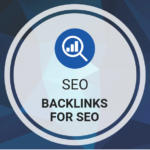Anchor Tag
Hyperlink/Anchor Tag
Tag: <a>
Syntax: <a href=“url.html” title=“keyword-rich link title here” rel=”nofollow” target=”_blank”>Viewable text</a>
Anchor tag indicates that the element located within will become a hyperlink. Hyperlinks are links on a page which point to other web pages. HREF stands for hypertext reference and its attribute is set to a URL. Anchors are links on a page which point to a particular position within a page. Both use the anchor tag syntax and have a number of attributes which can optionally be used. The title is displayed when the user moves their mouse over the link, while the anchor text (denoted by the string “Viewable Keyword-rich text” in the syntax description above) is the text which is displayed permanently on the page for everyone to see.
Description:
Search engines just like human visitors use links to navigate the Internet. As search engines crawl from page to page across multiple Web sites, each and every link is taken into consideration by individual search engine ranking algorithms. You can create an internal link structure that allows search engine spiders to quickly and easily navigate your Web site.
Overview:Internal Links
• It is important to get your internal linking structure correct. Internal links should point to similar subject matter and be immediately surrounded by keyword-optimized content. Ideally, a link to a page about subject X is best located in the middle of a paragraph containing text related to subject X.
• The position of the link relative to other content on the page is also important. A link positioned higher on a page is considered more important than one placed lower down.
• Try to have your keywords in the filename you are linking to.
• Link to content which is similar in topic to the content of your page.
• Also make good use of the title tag and anchor text and use either your keywords or stemming/similar terms to reinforce your subject.
• For the title and the anchor text, do not keyword stuff. Optimize for your users, but try to one or two keywords in the title and anchor text.
• Lastly, run a link checker to validate your link and make sure it is not broken. Do this periodically if you find you modify your site a lot.
• For both internal and outbound links, you can manipulate how they are handled in therobots meta tag.
• If possible, avoid using images to link to other pages of your site. Search engines cannot read images. Alt image tag is not passed as anchor text when linking from an image.
External/Outbound Links (links to pages on other sites)
• Just like with internal links, Google will use the pages you link to to determine the subject matter of your page. This works irrespective of whether or not the link is to an internal page or an external one.
• Try to make sure the sites you are linking to are reputable and of varying PR. Your outbound links reflect on your site and linking to a bad-reputation site could harm you.
• Link juice (i.e. PR) is passed to the pages you link to, so be wary of where you pass this PR around, i.e. where you link to.
• Consider include the NOFOLLOW attribute on all external links, except those which are high PR and most relevant. By using this attribute you once were preventing your link juice from being diluted and passed to pages which are not on your site, however Google confirms this practice (called ‘PR sculpting’) is now redundant as link-juice is passed to all links.
• Try to keep external links to less than one hundred per page. Google will penalize you if you have too many outbound links.
• As with internal links, validate your outbound links and make sure they point to a valid site.
• Also occasionally make sure the page/site you are linking to remains relevant to your subject and has not been sandboxed or removed from its index by Google.
As an example for a link to a page about Camel herding:
[Unoptimised] <a href=”https://www.seoprix.com”>Click here</a>
[Optimised] Camels are great. I keep 5 in my garden and let the kids have camel rides on the weekends. For a good camel ownership forum, see the <a title=”Camel Owners Forum” href=”http://www.cameltalk.org” rel=”NOFOLLOW” target=”_blank”>Taking Care of Camels</a> website which deals with all thinks related to owning and caring for your dromedary.


